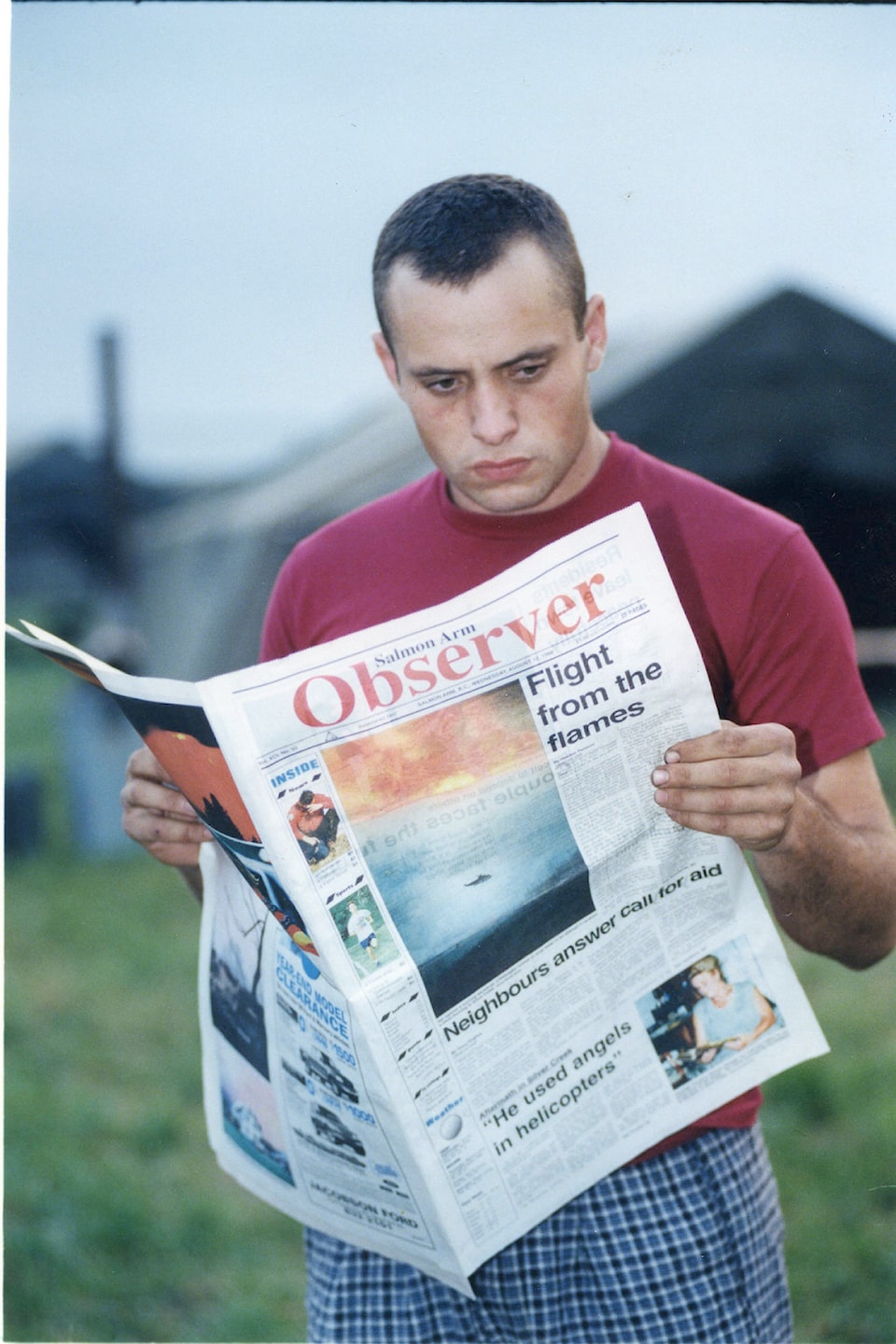Residents can make a difference to where and how fast a wildfire spreads.
New funding received by the Neskonlith Band and the City of Salmon Arm is intended to help explain how that’s possible.
The provincial government has announced ‘community resiliency investment grants,’ money that’s been on the wish list of many municipalities and firefighters for several years. A big part of the plan will be educating residents on how to protect their land and homes.
Among the local grants is $200,000 to be shared evenly between the Neskonlith and the city in a process led by the Neskonlith. The Columbia Shuswap Regional District was also awarded $100,000.
Terry Smith, president and general manager of the Silvatech Group, submitted the application on behalf of the Neskonlith.
“It’s only been in the last year the province has agreed to fund 100 per cent,” Smith said, noting there’s a lot of competition for the funding B.C.-wide. “In the past, the communities have had to put up half the funding so it wasn’t happening, and that was the same across the province.”
Read more: B.C. First Nations are owed massive debts after fighting to save homes from wildfires
Read more: Okanagan animal response team wants to help you prep for wildfire
He explained the first step will be to develop a community wildfire protection plan – one for the band and one for the city. The communities will be mapped by identifying hazards and types of fuels, with areas ranked in terms of risk. Then a plan can be made on where to “treat” or reduce risk.
As for educating the public, events will be held to demonstrate activities around the home that people can do to protect theirs, as well as ways to treat vegetation to prevent fires. A date has not been set yet for the Fire Smart Activity Day.
Smith says when fires take off, it’s because the fire throws off ashes, embers and firebrands (large burning balls of wood) which fall on combustibles on or around homes. Mini fires begin ahead of the main fire, quickly spreading the blaze.
Some tips for residents include: removing evergreen bushes around your home such as cedars or junipers – “those two in particular are very explosive species;” if you’re redoing your roof, avoid cedar shake roofing, or wood or vinyl siding. His recommendations include using asphalt tiles for roofing, or metal roofing.
Read more: Grants help communities prepare for wildfire
Read more: Column - Becoming better prepared for floods and fires
Smith points out that the 1998 fire that came up through Silver Creek was throwing ash and firebrands into the community.
In addition to protection plans and public education, funds will go to treating five hectares of land around the city.
“Probably as important or more important than what we will be doing in the city, is what people can do in their own homes.”
Salmon Arm Fire Chief Brad Shirley is equally pleased with the funding.
“Certainly it’s exciting for us knowing there’s going to be some mitigation that’s going to be happening. Along with that, funds for Fire Smart activities and education… It’s certainly a very good start with treatment and some education. Education is a key thing.”
@SalmonArm
marthawickett@saobserver.net
Like us on Facebook and follow us on Twitter
